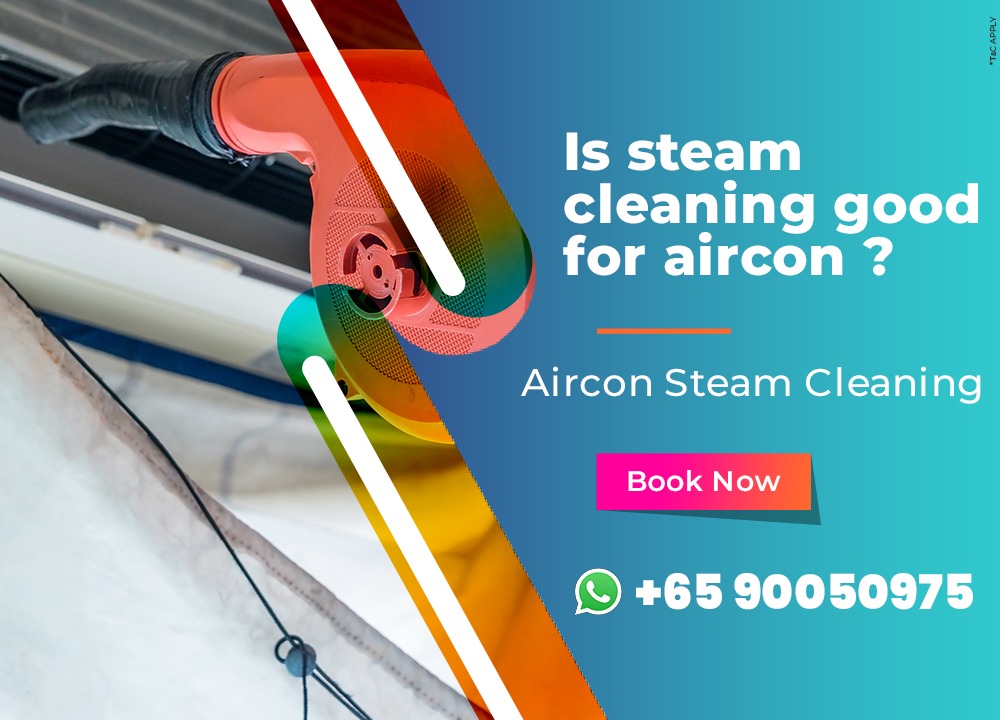
Aircon Steam cleaning
Aircon steam cleaning is a process that uses steam to clean the various components of an air conditioning system, including the coils, filters, and other parts. The high temperature of the steam helps to remove dirt, dust, and other debris from the system, which can improve its performance and efficiency.
Refer: Aircon service contract
The process typically involves using a specialized steam cleaning machine that is designed for use on air conditioning systems. The machine heats water to a high temperature and then sprays it onto the surfaces of the system, where it loosens and removes dirt and grime.
Which is best: Aircon steam cleaning or Aircon chemical cleaning?
Aircon steam cleaning can help to improve the air quality in your home or office by removing bacteria, mold, and other contaminants that can accumulate in the air conditioning system. It can also help to reduce energy consumption by improving the efficiency of the system, which can save you money on your energy bills.
However, it is important to note that aircon steam cleaning should only be performed by a trained and experienced professional, as improper use of the steam cleaning machine can cause damage to the air conditioning system or lead to other problems. It is also important to use a machine that is specifically designed for air conditioning systems, as using the wrong type of steam cleaning machine can also cause damage.
Aircon Steam cleaning vs Chemical Wash
Is steam cleaning good for aircon?
Steam cleaning can be effective for cleaning air conditioning systems, but it is important to use it correctly to avoid damaging the equipment.
Steam cleaning can remove dirt, dust, and other debris from the air conditioning unit’s coils, filters, and other components, which can improve the unit’s efficiency and performance. The high temperature of the steam can also help kill bacteria and mold, which can improve the air quality in your home or office.
However, it is important to use a steam cleaning machine that is designed for air conditioning systems and to follow the manufacturer’s instructions carefully. Using the wrong type of steam cleaning machine or using it incorrectly can cause damage to the unit’s sensitive components or cause water to accumulate inside the system, which can lead to other problems.
Therefore, it is recommended to hire a professional air conditioning service provider to perform the steam cleaning of your unit to ensure it is done correctly and safely.
While steam cleaning has several benefits, it also has some potential disadvantages to consider:
Not suitable for all surfaces:
Steam cleaning is not suitable for all surfaces, as the high temperature and moisture can damage certain materials, such as untreated wood or delicate fabrics.
Requires electricity:
Steam cleaning machines require electricity to operate, so they may not be the best option for cleaning outdoor areas or remote locations.
Potential for burns:
The high temperature of the steam can also pose a risk of burns if not used properly. Care should be taken when using steam cleaning machines, especially around children and pets.
Initial investment cost:
Steam cleaning machines can be expensive to purchase, so it may not be a practical solution for those on a tight budget.
May not remove all stains:
While steam cleaning can effectively remove dirt and grime, it may not be able to remove all types of stains, such as deep-set oil or grease stains.
Time-consuming:
Steam cleaning can take longer than other cleaning methods, as the machine needs time to heat up and the cleaning process itself can be slower than other methods.
Overall, steam cleaning can be a highly effective cleaning method when used correctly and on appropriate surfaces, but it is important to weigh the potential disadvantages against the benefits before deciding if it is the right choice for your cleaning needs.
